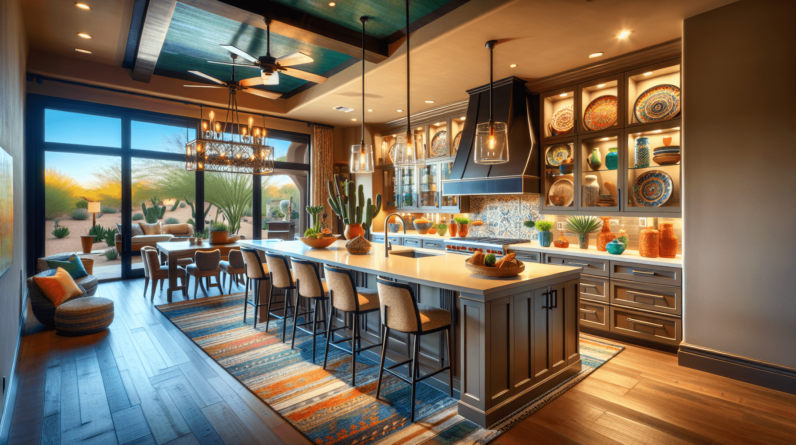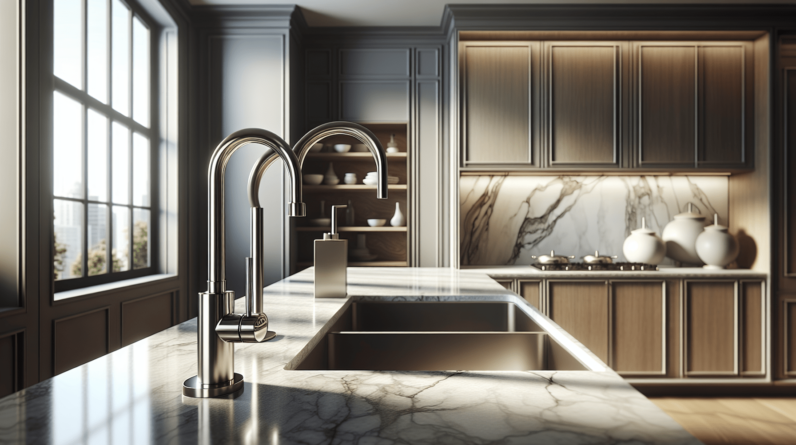
Have you ever found yourself dreaming about transforming your small kitchen into a functional and stylish space? Remodeling a kitchen can seem daunting, especially when you consider the costs involved. Let’s unravel the intricacies of remodeling a small kitchen, so you can embark on this journey with confidence.
Understanding the Costs
When you think about remodeling a small kitchen, it’s important to understand the various factors that contribute to the overall cost. Generally, a kitchen remodel can range anywhere from a few thousand dollars to tens of thousands.
Average Costs by Scope of Remodel
The scope of your remodel defines much of your budget. Here’s a general breakdown of what you might expect:
| Type of Remodel | Cost Range (Low) | Cost Range (High) |
|---|---|---|
| Cosmetic Updates | $5,000 | $15,000 |
| Moderate Remodel | $15,000 | $30,000 |
| Extensive Overhaul | $30,000 | $50,000+ |
Cosmetic updates are minor changes like painting cabinets or adding new lighting. A moderate remodel might include new countertops and appliances, while an extensive overhaul typically involves structural changes.
Factors Affecting the Cost
Multiple factors can influence how much your kitchen remodel will cost.
Size of the Kitchen
The space you are working with will play a significant role in the budget. Since you’re focusing on a small kitchen, the square footage is less, which usually translates to lower material costs. However, it can also lead to higher per-square-foot expenses for some materials.
Materials Used
Quality materials significantly impact your kitchen remodel budget. Here’s a quick look at common materials and their costs:
| Material | Cost per Square Foot |
|---|---|
| Laminate Countertops | $15 – $40 |
| Granite Countertops | $40 – $100 |
| Tiles (Floor/Backsplash) | $0.50 – $10 |
| Cabinets (Stock) | $100 – $300 |
| Custom Cabinets | $500 – $1,200 |
Choosing high-end materials can increase your budget, while more affordable options can help you save.
Labor Costs
Labor costs can vary depending on your location and the complexity of the job. Hiring a skilled contractor offers a range of benefits, but it can also bump up the costs quite a bit. Generally, you can expect to allocate about 20-35% of your total budget towards labor.
Design Changes
If you only want to make cosmetic changes, you’re likely to spend less compared to more extensive design modifications, such as moving plumbing or electrical systems. Small updates like changing cabinet hardware or swapping out fixtures can keep costs manageable.
Planning Your Budget
Setting a clear budget is essential before diving into any remodel.
Determine Your Goldilocks Zone
Identify what your ideal budget looks like. You may want to jot down your maximum comfortable spending limit for the entire project. Once that’s in place, factor in a buffer of approximately 10-20% for unexpected expenses, as these often arise during renovations.
Prioritize Your Must-Haves
Create a prioritized list of the changes you want to make. Rank each item based on necessity, ensuring essential updates like appliance upgrades or safety-related changes come first on your list. This way, if you need to trim costs, you’ll know which items are non-negotiable.
Breaking Down Potential Costs
Let’s break down some specific areas of spending. Each category presents its own set of potential expenses that you might encounter during a small kitchen remodel.
Cabinets
Replacing cabinets is often one of the largest expenses in a kitchen remodel. The choice between stock, semi-custom, and custom cabinets can drastically affect your budget.
- Stock Cabinets: Generally the most affordable option, ranging from $100-$300 per cabinet.
- Semi-Custom Cabinets: Offer more flexibility in terms of size and style, typically between $150-$600 per cabinet.
- Custom Cabinets: Tailored to your specifications and style but can easily surpass $1,200 per cabinet.
Countertops
The material chosen for your countertops has a significant bearing on your budget.
- Laminate: Less expensive and available in various designs, making it a good option for budget-conscious remodelers.
- Granite or Quartz: These materials add value but can also be costly. Expect to pay anywhere from $40 to $100 per square foot for these options.
Keep in consideration that you will need to evaluate each option based on your durability and maintenance needs.
Flooring
Updated flooring can transform your kitchen’s look and feel. Here are a few common choices:
- Vinyl: An affordable option at about $2-$5 per square foot.
- Tile: Ranges from $0.50-$10 per square foot depending on the type and style.
- Hardwood: A more luxurious choice that can cost $5-$15 per square foot.
Appliances
New appliances often take a large bite out of your budget. Setting a reasonable expectation for appliance costs is crucial.

- Refrigerators: Average costs range from $700 to $2,500 depending on the brand and features.
- Ovens and Ranges: You might spend between $500 and $3,000 based on the functionalities you prefer.
- Dishwashers: Expect to spend about $400 to $1,500.
Lighting
Good lighting in a kitchen can change the entire ambiance. Look at these categories:
- Task Lighting: Essential for workspaces, costing around $50 to $200 per fixture.
- Ambient Lighting: Provides overall illumination, generally costing as little as $25 per bulb.
- Accent Lighting: Adds visual interest, often priced between $30 and $150 per fixture.
Backsplash
A beautiful backsplash can enhance the aesthetics of your kitchen. The material you choose will largely influence costs:
- Peel-and-Stick: Budget-friendly at around $10-$15 per square foot.
- Ceramic Tile: Traditional choice, usually priced from $5 to $25 per square foot.
- Glass or Natural Stone: More upscale, costing $20–$50 per square foot.
Strategies to Save Money
Remodeling doesn’t have to break the bank. Here are some tips to help keep costs in check without compromising quality.
DIY When Possible
If you have the confidence and skills, tackling certain aspects of the remodel yourself can save you money. Small tasks like painting cabinets, installing fixtures, or even putting in a backsplash can often be done without special training.
Shop Sales and Clearances
Take the time to look for sales or clearance items. Whether you’re searching for appliances or materials, it’s always worth checking if you can snag a great deal.
Consider Refurbished Items
Refurbished or slightly used items often represent significant savings. Keep an eye on local listings for appliances or fixtures that are still in great shape but come at a fraction of the price.
Limit Structural Changes
If you’re considering moving walls or plumbing, reconsider. Staying within the existing layout of your kitchen can lead to significant savings.
Hiring the Right Professionals
If you’ve decided to hire professionals, it’s crucial to choose the right people for the job.
Research and Compare
Investigate potential contractors through reviews and recommendations from friends and family. Be sure to compare quotes to ensure you’re getting quality work at a reasonable price.
Ask for References
When interviewing contractors, don’t hesitate to ask for references. Previous customers can provide insight into their experiences, helping you make the right choice.
Check Credentials
Ensure that contractors are fully licensed and insured. This step protects you from any liabilities and provides peace of mind knowing that the work will be done professionally.
Financing Your Remodel
Understanding different financing options can make your remodel more feasible.
Savings
Using personal savings is one of the best ways to pay for a remodel. It avoids interest payments and debt but may take time to accumulate the necessary funds.
Home Equity Loan
If you have equity in your home, a home equity loan can provide the funds needed at comparatively low-interest rates.
Credit Cards
Using credit cards for smaller payments can be appropriate, but be cautious of high-interest rates. Only consider this if you’re confident you can pay off the balance quickly.
Personal Loans
Personal loans are also an option but typically come with higher interest rates. They might be suitable for covering costs if you have a comprehensive plan for repayment.
Conclusion
Thinking about remodeling your small kitchen can feel overwhelming, but breaking down the costs and planning effectively can set you on the right path. By understanding the critical components that impact your budget and making informed decisions, you’ll be well-equipped to create that dream kitchen without financial stress.
Keeping your priorities straight and maintaining a flexible mindset will ease the process. So, how ready are you to bring new life to your kitchen? Start planning today and look forward to enjoying that refreshed space.






